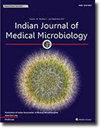新一代宏基因组测序在重症监护病房脓毒症患者血液样本中检测病原体的临床疗效
IF 1.4
4区 医学
Q4 IMMUNOLOGY
引用次数: 0
摘要
元基因组新一代测序(mNGS)被认为是优于传统培养的病原体检测方法。然而,它在脓毒症患者中基于血液样本的应用仍然有限。方法比较78例脓毒症患者的mNGS和基于培养的诊断,其中25例脓毒症,53例脓毒症休克。结果在68例样本类型匹配的病例中,38例仅通过mNGS检测到病原体,2例仅通过微生物培养检测到病原体。63例患者中有17例(26.98%)mNGS和培养均为阳性,6例(9.52%)两种诊断方法均为阴性。无论是否有抗生素暴露史,mNGS阳性率为80.77%,显著高于培养组(37.18%)。值得注意的是,在38例仅通过mNGS诊断的脓毒症患者中,有23例患者在医生根据mNGS结果调整治疗后获得了良好的结果。结论mNGS为脓毒症的检测提供了一种快速、准确的病原菌鉴定方法,是一种很有前景的脓毒症检测技术。本文章由计算机程序翻译,如有差异,请以英文原文为准。
Clinical efficacy of metagenomic next-generation sequencing for pathogen detection in septic patients based on blood samples in intensive care units
Background
Metagenomic next-generation sequencing (mNGS) is considered superior to traditional culture for pathogen detection. However, its utility in septic patients based on blood samples remains limited.
Methods
This research aimed to compare mNGS and culture-based diagnostics in 78 septic patients, with 25 with sepsis and 53 with septic shock.
Results
Among 68 cases with matching sample types, pathogens of 38 cases were solely identified through mNGS, and in contrast, 2 cases had their pathogens detected by microbiological culture only. Moreover, 17 of 63 cases (26.98 %) were found to be positive by both mNGS and culture, and 6 of 63 cases (9.52 %) came negative under both diagnostic methods. Regardless of prior antibiotic exposure, the positive rate of mNGS, which was 80.77 %, was significantly higher than that of culture (37.18 %). Significantly, among the 38 septic patients diagnosed solely by mNGS, 23 patients achieved a favorable outcome after physicians adjusted the treatment based on the mNGS findings.
Conclusion
In conclusion, mNGS offered a swift and accurate means for pathogen identification, and thus making this approach as a promising technology for detecting sepsis.
求助全文
通过发布文献求助,成功后即可免费获取论文全文。
去求助
来源期刊

Indian Journal of Medical Microbiology
IMMUNOLOGY-
CiteScore
2.20
自引率
0.00%
发文量
154
审稿时长
73 days
期刊介绍:
Manuscripts of high standard in the form of original research, multicentric studies, meta analysis, are accepted. Current reports can be submitted as brief communications. Case reports must include review of current literature, clinical details, outcome and follow up. Letters to the editor must be a comment on or pertain to a manuscript already published in the IJMM or in relation to preliminary communication of a larger study.
Review articles, Special Articles or Guest Editorials are accepted on invitation.
 求助内容:
求助内容: 应助结果提醒方式:
应助结果提醒方式:


